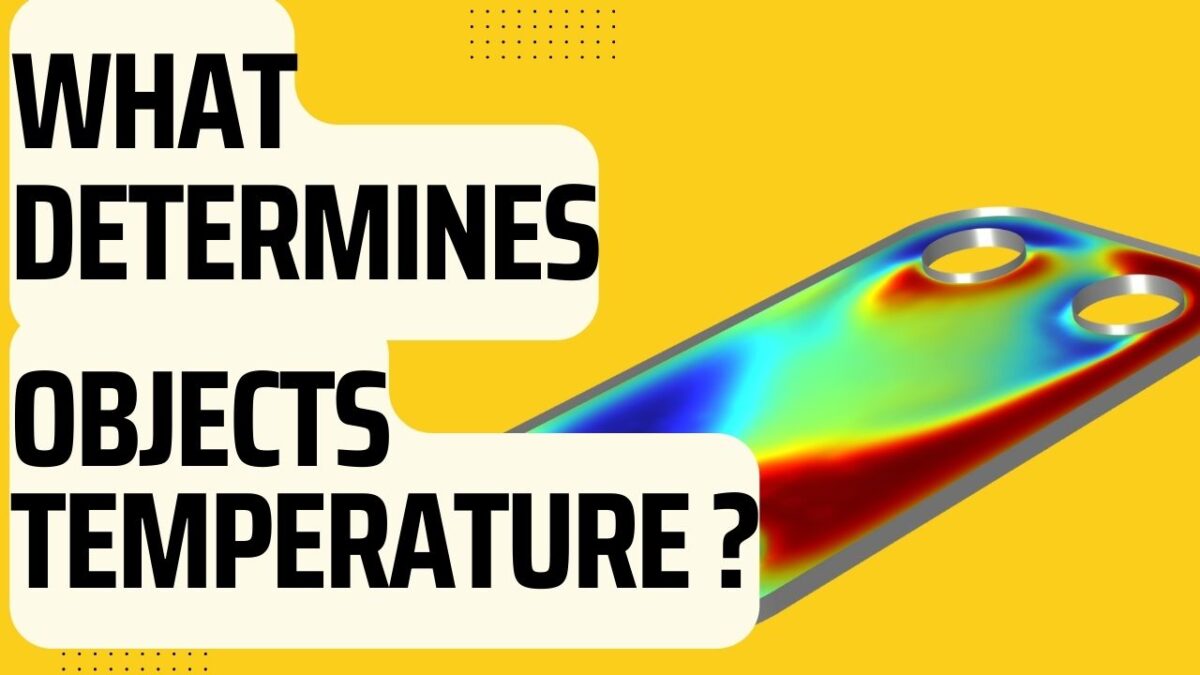Temperature is a measure of the degree of hotness or coldness of an object or substance. It is a measure of the average kinetic energy of the particles in an object or substance, which is the energy associated with the movement of the particles. The higher the temperature of an object or substance, the faster the particles are moving and the more kinetic energy they possess.

There are several factors that can determine the temperature of an object or substance. One of the most important factors is the amount of heat energy that is added to or removed from the object or substance. Heat energy is a form of energy that is associated with the movement of particles, and it is transferred from one body to another as a result of a temperature difference between the two bodies. When heat energy is added to an object or substance, the temperature of the object or substance increases, and when heat energy is removed from an object or substance, the temperature decreases.
Another factor that can determine the temperature of an object or substance is the type of material the object is made of. Different materials have different heat capacities, which is a measure of the amount of heat energy required to raise the temperature of a given mass of the material by one degree Celsius. Materials with a high heat capacity require more heat energy to raise their temperature, while materials with a low heat capacity require less heat energy. As a result, objects made of materials with a high heat capacity tend to have a lower temperature than objects made of materials with a low heat capacity, even if they are exposed to the same amount of heat energy.(objects temperature)

The size and shape of an object or substance can also affect objects temperature. A larger object will generally have a lower temperature than a smaller object, even if they are made of the same material and exposed to the same amount of heat energy. This is because the larger object has more mass, and therefore more particles, which means that the heat energy is spread out over a larger area and has less of an impact on the temperature of the object. Similarly, an object with a larger surface area will generally have a lower temperature than an object with a smaller surface area, because the heat energy is spread out over a larger area and has less of an impact on the temperature of the object.
The rate at which heat energy is added to or removed from an object or substance can also affect its temperature. If heat energy is added to an object or substance quickly, the temperature of the object or substance will increase rapidly. On the other hand, if heat energy is added to an object or substance slowly, the temperature of the object or substance will increase more slowly. Similarly, if heat energy is removed from an object or substance quickly, the temperature of the object or substance will decrease rapidly, and if heat energy is removed slowly, the temperature will decrease more slowly.
Finally, the type of environment that an object or substance is in can also affect its temperature. For example, an object or substance that is exposed to direct sunlight will generally have a higher temperature than an object or substance that is in a shady area, because the sun is a source of heat energy. Similarly, an object or substance that is in a room with a high ambient temperature will generally have a higher temperature than an object or substance that is in a room with a low ambient temperature.
In summary, there are several factors that can determine the temperature of an object or substance, including the amount of heat energy added to or removed from the object or substance, the type of material the object is made of, the size and shape of the object, the rate at which heat energy is added to or removed from the object or substance, and the type of environment the object or substance is in.
Tips on simulation ? read HERE
What to Learn Simulation? Check out our FREE youtube channel
